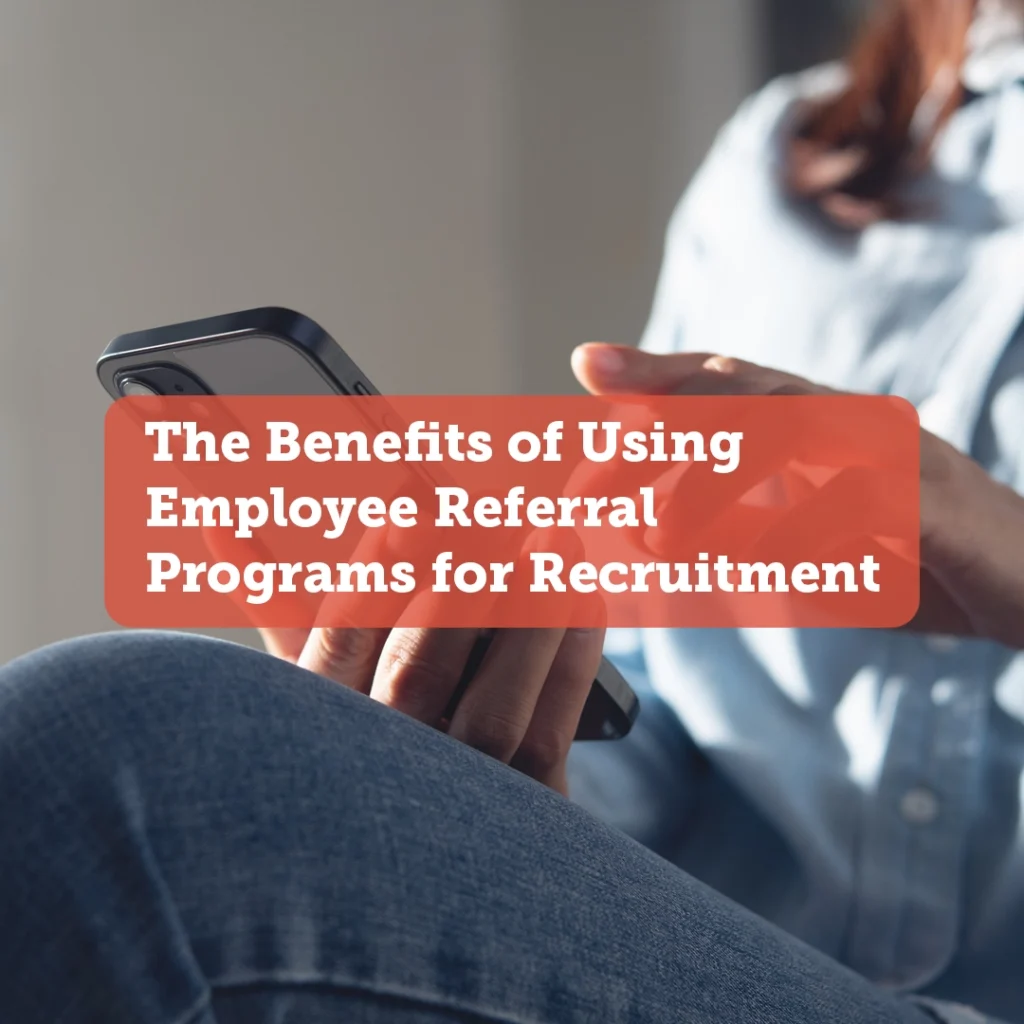The Benefits of Using Employee Referral Programs for Recruitment
Employee referral programs have become increasingly popular among companies as an effective recruitment strategy. By tapping into the networks and connections of their existing employees, organizations can leverage the power of word-of-mouth to attract high-quality candidates. In this article, we will explore the various advantages of implementing an employee referral program and how it can positively impact your recruitment efforts.

Understanding Employee Referral Programs
An employee referral program is a structured process wherein organizations encourage their employees to refer potential candidates for open positions within the company. This program typically involves rewarding employees who successfully refer a candidate that gets hired. The primary goal is to utilize the trust and credibility established among colleagues to identify top talent and fill job vacancies swiftly.
What is an Employee Referral Program?
An employee referral program is an internal recruitment strategy that allows companies to tap into the networks of their employees to find and attract potential candidates for job openings. It enables organizations to source talent through their existing workforce, utilizing the power of personal connections and recommendations.
Key Components of a Successful Referral Program
To implement an effective employee referral program, several key components need to be considered:
1. Clear Program Objectives: Define the goals and desired outcomes of the program, such as reducing time-to-hire or improving the quality of candidates.
2. Incentives and Rewards: Offer attractive incentives to motivate employees to participate actively in the program, such as cash bonuses, recognition, or even additional time off.
3. Structured Guidelines: Clearly outline the rules and guidelines of the program, including eligibility criteria, referral submission process, and evaluation criteria for successful referrals.
4. Regular Communication: Keep employees informed about job openings, program updates, and success stories to maintain engagement and interest in the referral program.
5. Efficient Tracking and Evaluation: Utilize technology and software solutions to streamline the referral process, track submissions, and measure the program’s effectiveness.
Employee referral benefits
Implementing an employee referral program can have numerous benefits for both the organization and its employees. By leveraging the existing relationships and networks within the company, organizations can tap into a pool of potential candidates who are more likely to align with the company culture and values. This can result in higher retention rates and increased employee satisfaction.
Moreover, employee referral programs can significantly reduce the time and cost associated with traditional recruitment methods. By relying on referrals, organizations can bypass lengthy and expensive external hiring processes, saving both time and money. Additionally, referred candidates tend to have a shorter onboarding period and require less training, as they are already familiar with the company’s operations and values.
Furthermore, employee referral programs can enhance employee engagement and morale. When employees are actively involved in the recruitment process and can contribute to the growth of the organization, they feel ownership and pride. This can lead to increased job satisfaction and a more positive work environment.
For example, the referrers should be asked how they met the candidate, how long they have known each other, and if they have worked any past jobs together. Ultimately, this leads you to find out if the employees would be a good match, resulting in faster screening, lower turnover rate, and overall better hires (Harvard Business Review 2020).
The Role of Employee Referral in Recruitment
Implementing an employee referral program can significantly impact your recruitment process in various ways, enhancing the overall quality of hire and efficiency.
Employee referral programs have gained popularity in recent years due to their effectiveness in attracting top talent. These programs rely on the networks of your existing employees to bring in potential candidates, tapping into a pool of passive job seekers who may not be actively looking for new opportunities. By encouraging your employees to refer qualified candidates, you can access a diverse talent pool that may not be reached through traditional recruitment methods.
The Impact on Recruitment Process
One of the significant benefits of employee referral programs is the potential to streamline the recruitment process. According to a study conducted by Jobvite, employee referrals have the highest applicant-to-hire conversion rate compared to other recruitment sources.
By leveraging the existing connections of your employees, you can attract candidates who align with your company culture and have a higher likelihood of fitting well within your organization. This can result in reduced time spent on screening and interviewing, ultimately leading to a quicker hiring process and cost savings.
Furthermore, employee referral programs can help create a positive candidate experience. When candidates are referred by someone within the organization, they often have a better understanding of the company’s values and expectations. This insider knowledge can lead to a smoother onboarding process and higher levels of job satisfaction among new hires.
Enhancing the Quality of Hire
Employee referrals can also enhance the quality of hire for your organization. Research by the Society for Human Resource Management (SHRM) suggests that employees hired through referral programs tend to have longer tenures and perform better compared to candidates from other sources.
When employees refer someone they trust and have personally evaluated, they are more likely to vouch for their skills, work ethic, and cultural fit. This increases the chances of bringing in top talent who are motivated, engaged, and aligned with the company’s values.
Advantages of Employee Referral Programs
Implementing an employee referral program offers several unique advantages for organizations:
Cost-Effective Recruitment Strategy
Recruitment can be a costly endeavor, particularly when considering advertising fees, agency fees, and other expenses associated with traditional hiring methods. Employee referral programs, on the other hand, can significantly reduce these costs.
A study by CareerBuilder found that employee referral recruitment strategies have the lowest cost per hire compared to other recruitment channels. This is primarily because referrals often result in faster hiring times, reducing the need for extended job postings or expensive external sourcing.
Shorter Hiring Time
In today’s competitive job market, time is of the essence. Vacant positions can put a strain on workload distribution and productivity. Employee referral programs can expedite the hiring process by tapping into the extended network of your employees.
According to a report by iCIMS, candidates hired through employee referrals take significantly less time to fill open positions compared to candidates from job boards or career sites. By leveraging your employees’ connections, you can gain access to a pool of candidates who are actively looking for new opportunities.
Increased Employee Engagement and Retention
Employee referral programs can have a positive impact on overall employee engagement and retention rates. When employees feel their recommendations are valued and impact the organization, they become more engaged and invested in the company’s success.
Moreover, the social nature of referral programs fosters a sense of camaraderie among employees. Collaborating on finding suitable candidates and contributing to the growth of the organization can strengthen bonds within teams and improve job satisfaction, leading to higher employee retention rates.
Implementing an Effective Employee Referral Program
To maximize the benefits of an employee referral program, attention must be given to its design, promotion, and evaluation.
Designing the Referral Program
When designing an employee referral program, consider the following factors:
- Referral Eligibility: Clearly define the criteria for eligible referrals, ensuring they align with the skillset and experience required for the open position.
- Referral Rewards: Determine the incentives and rewards employees will receive for successful referrals. These can include cash bonuses, gift cards, or even opportunities for career advancement.
- Program Duration: Decide on the duration of the referral program, ensuring it is long enough to allow employees to participate actively while maintaining momentum.
- Promoting the Referral Program Among Employees
- Proactive communication and promotion are essential for the success of an employee referral program. Create awareness and generate excitement among employees by:
- Announcing the program launch through company-wide emails, newsletters, or team meetings.
- Providing clear instructions on how to refer candidates and highlighting the benefits of participating in the program.
- Recognizing and rewarding successful referrals publicly to encourage participation and showcase the impact of the program.
Evaluating and Improving the Program
Regular evaluation and improvement are crucial to the long-term success of an employee referral program. Monitor the program’s performance and make data-driven adjustments to ensure its effectiveness. Consider metrics such as the number of referrals, the conversion rate, and the quality of hires to assess the program’s impact.
Potential Challenges and Solutions
While employee referral programs offer numerous benefits, they can present challenges that need to be addressed:
Overcoming Common Obstacles
Employee referral programs might face hurdles due to limited employee participation, lack of awareness, or biases in the referral process. To overcome these challenges:
Create a culture of inclusivity and diversity by offering training on unconscious bias and promoting equal opportunities.
Regularly communicate the program’s progress, success stories, and rewards to maintain employee engagement and interest.
Provide clear guidelines on what constitutes a qualified candidate to avoid favoritism or undue influence.
Ensuring Fairness and Transparency in the Program
Transparency is essential in the referral program to maintain trust and ensure fairness. Establish clear evaluation criteria, communicate the selection process, and provide timely updates to employees regarding the status of their referrals. Additionally, implement mechanisms for employees to provide feedback and address any concerns they may have.
Employee referral programs offer a multitude of benefits for companies seeking to attract top talent efficiently. By utilizing the power of employee networks, these programs can
enhance the quality of hires, reduce recruitment costs, and foster employee engagement. However, it is important to design and implement these programs thoughtfully, considering the unique needs and culture of the organization. By addressing potential challenges and continuously evaluating and improving the referral program, companies can derive maximum value from this recruitment strategy.
Join Our Network and Discover Your Ideal Job
At Hunter Recruiting, we understand the value of connecting talented professionals with the right opportunities. If you’re seeking a meaningful career with top employers in science, technology, engineering, finance, healthcare, or executive roles, we’re here to help. Find your next job through our extensive network and become part of the success story at Fortune 500 companies and healthcare leaders. Let’s make your professional aspirations a reality together.






